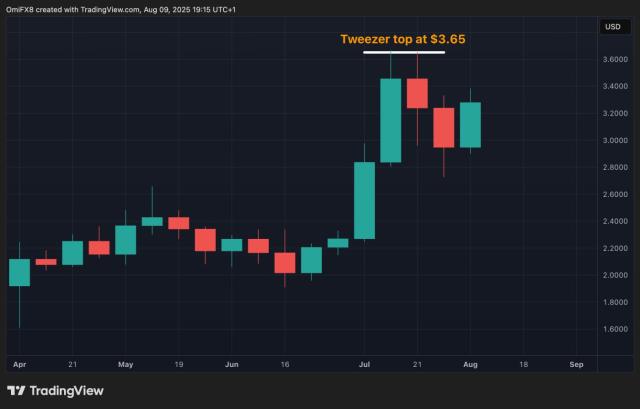Chainfeeds Guide:
The Cosmos ecosystem is at a critical historical moment.
Article Source:
https://www.techflowpost.com/article/detail_27470.html
Article Author:
TechFlow
Perspective:
TechFlow: In early 2024, the Celestia (TIA) airdrop triggered massive waves in the crypto community. As a modular data availability network built on Cosmos SDK, it is deeply integrated with the Cosmos ecosystem through the IBC protocol. A year ago in spring, TIA's price peaked at $20.17, with social media filled with stories of overnight wealth. However, just two months later, a selling wave hit, causing the price to plummet 91.9% to around $1.6. This event reveals the typical hype cycle of the Cosmos ecosystem - a selling cycle: airdrop news attracts speculative funds to drive up prices, creating an illusion of prosperity; early holders cash out, triggering panic selling and price collapse. Osmosis experienced a similar process during the 2022 liquidity mining boom, dropping from $11 to $0.17. Each cycle erodes ecosystem trust and funding base, driving away long-term builders and creating a volatile atmosphere. ATOM, as the core ecosystem asset, is also in trouble: in a multi-chain parallel environment, child chain tokens are independent and do not rely on ATOM, making value difficult to flow back; unlimited total supply brings continuous dilution pressure; the free chain-building concept encourages innovation but leads to traffic dispersion. ATOM has become a nominal "puppet emperor" with governance failures frequently occurring. In 2022, the JUNO community voted to seize tokens to prevent whales from circumventing airdrop restrictions, leading to community division, confidence collapse, and price drop from $43 to $0.09. Cosmos's predicament reflects the collective anxiety of multi-chain ecosystems: severe disconnection between technological innovation and market adoption. In April 2025, Cosmos had the highest development activity among blockchain projects, but the overall number of active crypto developers was declining. BNB Chain, Polygon, Arbitrum, Optimism, Avalanche, and others experienced 6%-12% developer loss, with the Polkadot community even shouting "React or die". Structural challenges of multi-chain ecosystems include: lack of network effects, unable to form a self-reinforcing cycle like Ethereum; insufficient economic incentives, difficulty attracting and retaining top developers; unclear market positioning, strong technology but lacking applications. In Q2 2025, the total crypto market value exceeded $3.5 trillion, but growth mainly came from institutional funds with controllable risks, high liquidity, and strong compliance, making Bitcoin and Ethereum more attractive, while multi-chain projects were marginalized in financing and liquidity. Simultaneously, institutionalization accelerated the "Matthew effect" in infrastructure construction, with key facilities like stablecoins primarily centered around mature networks, excluding multi-chain ecosystems. This forces them to shift from technological competition to focusing on user experience and application scenarios to regain vitality in the next innovation cycle. In 2025, Cosmos stands at a crossroads of life and death. From the blockchain internet vision launched in 2019 to the interoperability frenzy when ATOM reached $44.70 in 2021, and then to deep reflection during the bear market when it dropped to $3.5, Cosmos's development has been full of ups and downs. Although currently in a low point, it is undergoing technical upgrades and governance reforms, with different institutions showing significant divergence in future predictions: pessimists emphasize technical indicators showing bear market pressure, while optimists anticipate bull market-driven price breakthroughs of $20-40. Key factors influencing the future include ecosystem expansion, technological progress, market sentiment, regulatory environment, and competitive pressure. However, the effects of upgrades and reforms need time to be verified, facing competition from Layer-2 and other interoperability solutions, as well as impacts from macroeconomic policies and geopolitical risks. The transition from idealism to realism is painful, requiring balance between technology and market. History shows that great technologies are often born in the darkest moments. Cosmos needs time to prove whether it awaits a new dawn or deeper darkness.
Content Source








